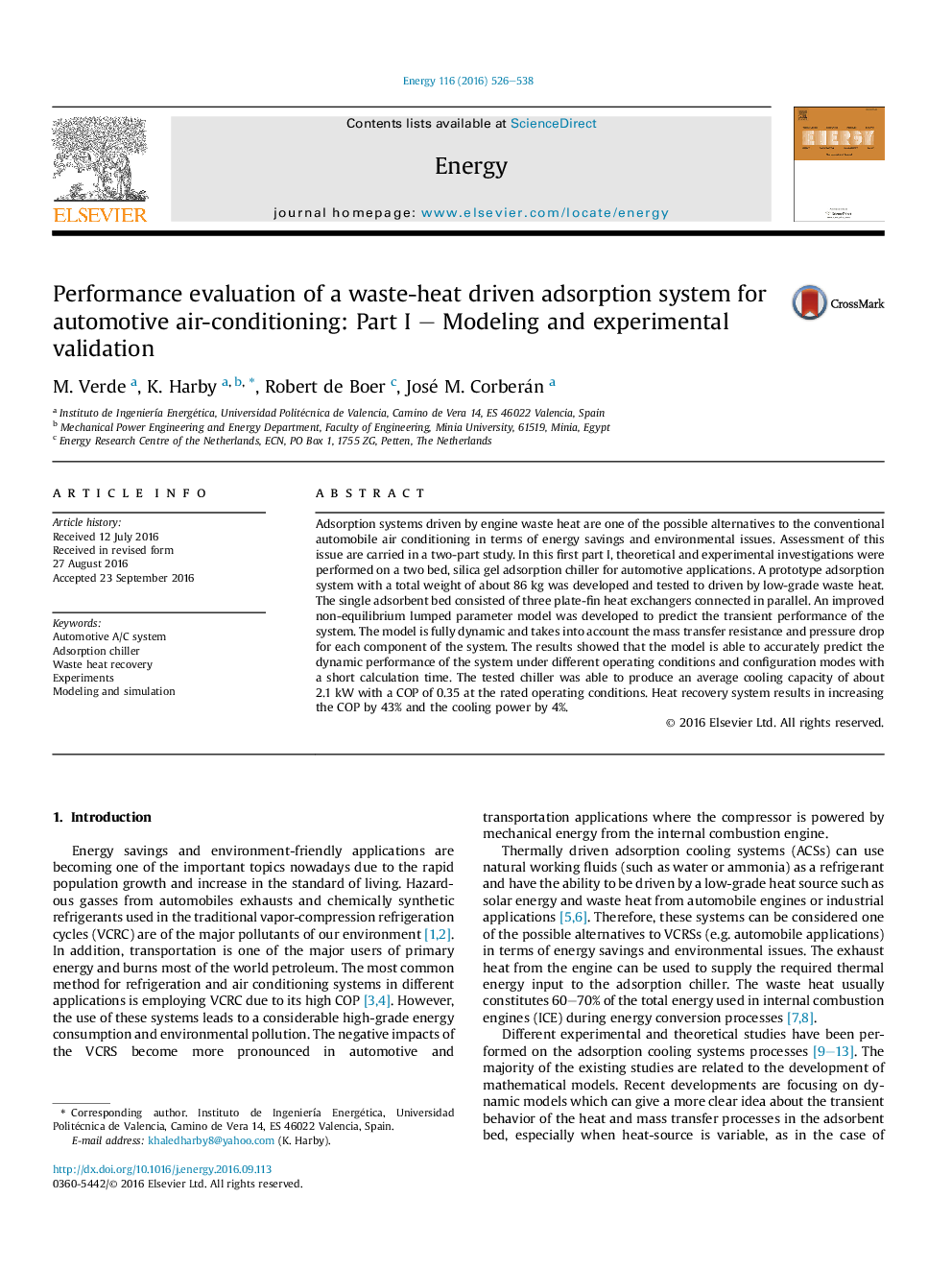| Article ID | Journal | Published Year | Pages | File Type |
|---|---|---|---|---|
| 5477308 | Energy | 2016 | 13 Pages |
Abstract
Adsorption systems driven by engine waste heat are one of the possible alternatives to the conventional automobile air conditioning in terms of energy savings and environmental issues. Assessment of this issue are carried in a two-part study. In this first part I, theoretical and experimental investigations were performed on a two bed, silica gel adsorption chiller for automotive applications. A prototype adsorption system with a total weight of about 86Â kg was developed and tested to driven by low-grade waste heat. The single adsorbent bed consisted of three plate-fin heat exchangers connected in parallel. An improved non-equilibrium lumped parameter model was developed to predict the transient performance of the system. The model is fully dynamic and takes into account the mass transfer resistance and pressure drop for each component of the system. The results showed that the model is able to accurately predict the dynamic performance of the system under different operating conditions and configuration modes with a short calculation time. The tested chiller was able to produce an average cooling capacity of about 2.1Â kW with a COP of 0.35Â at the rated operating conditions. Heat recovery system results in increasing the COP by 43% and the cooling power by 4%.
Related Topics
Physical Sciences and Engineering
Energy
Energy (General)
Authors
M. Verde, K. Harby, Robert de Boer, José M. Corberán,
